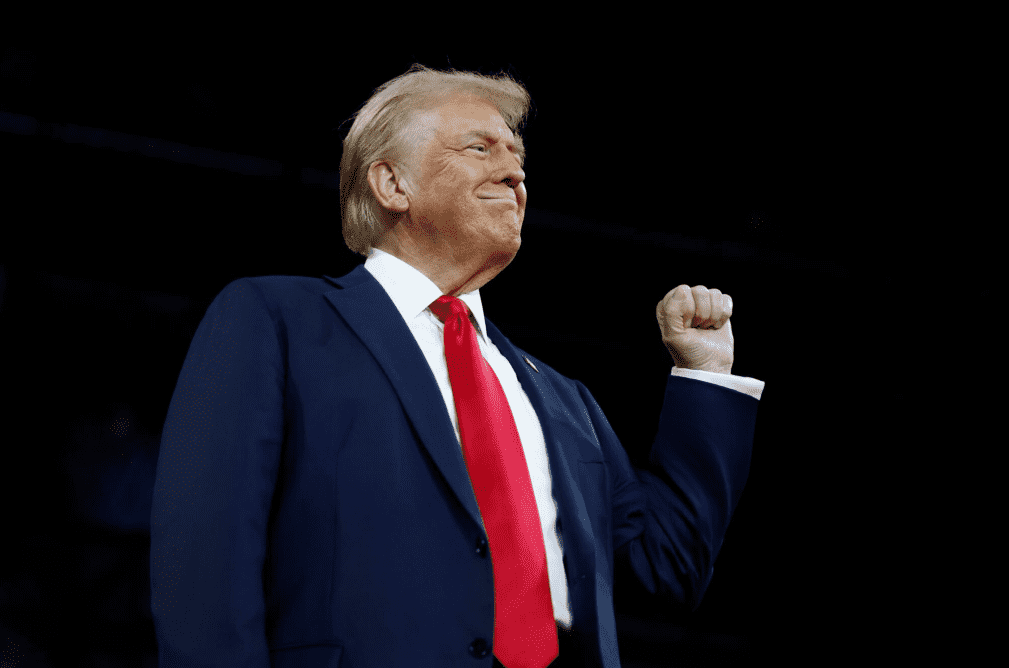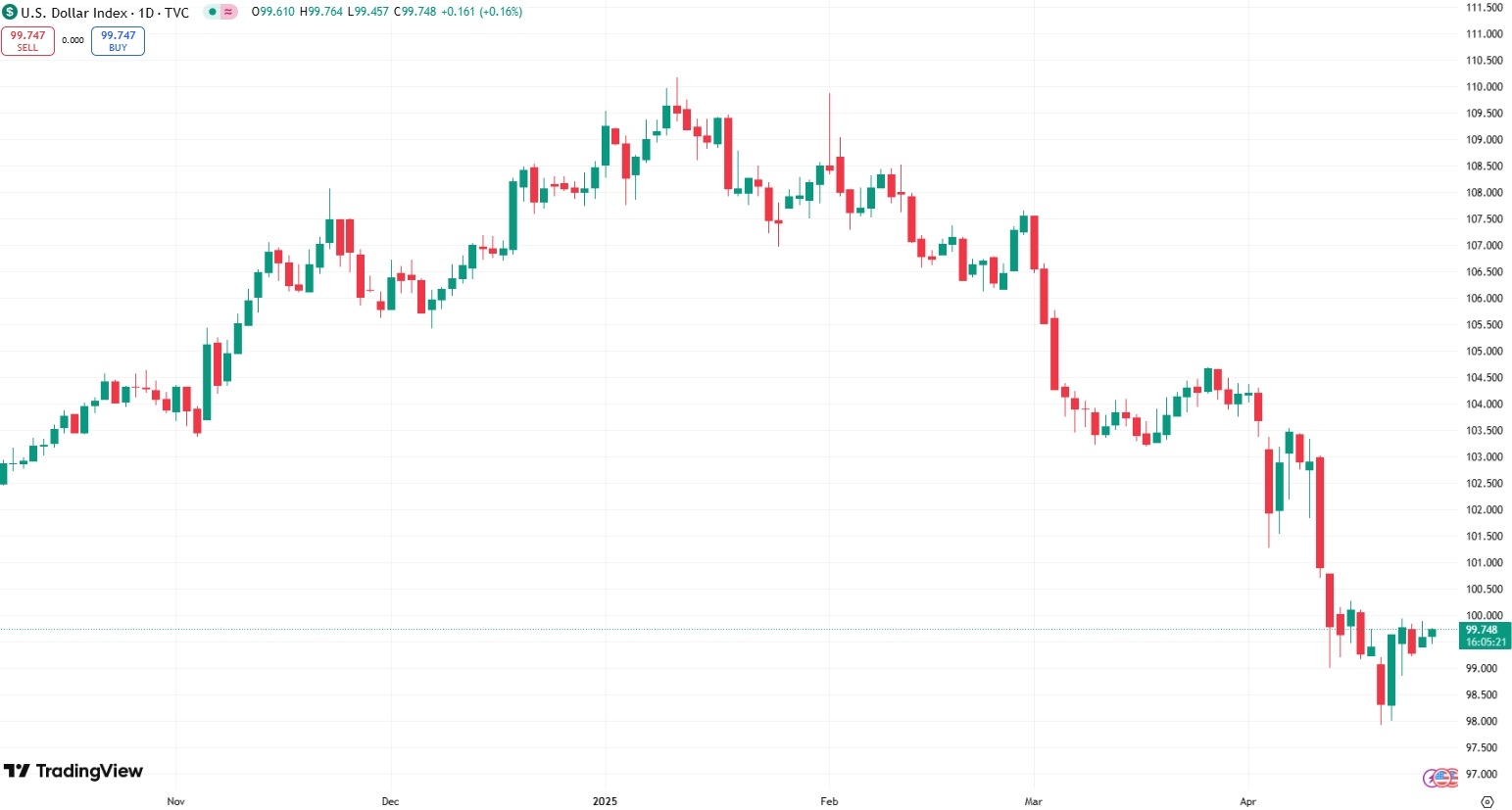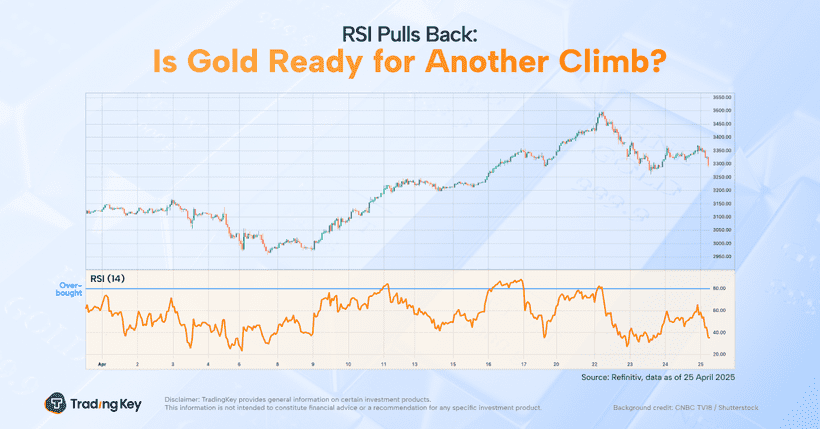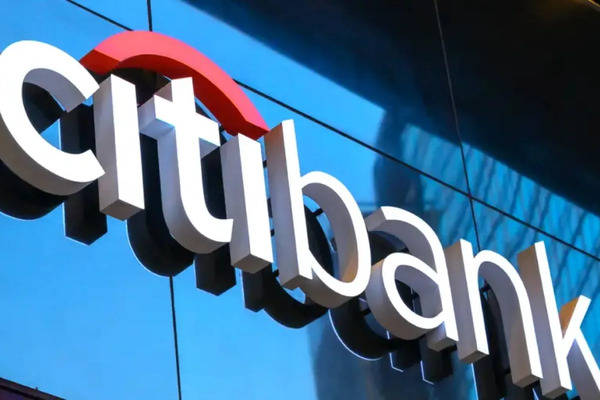"Five Sins" of Trump 2.0's First 100 Days: How a Pro-Business President Undermines "America First"?


TradingKey - U.S. President Donald Trump is approaching the 100-day mark of his second term on April 30. However, sharp declines in U.S. stocks, bonds, and the dollar, alongside rising recession forecasts from Wall Street, reflect widespread dissatisfaction with his administration’s performance. This starkly contrasts with the economic success of his first term.
During his initial presidency, policies such as tax cuts, deregulation, and expanded fiscal stimulus largely won favour from capital markets, driving sustained growth in U.S. equities. It was widely assumed that “Trump 2.0” would similarly deliver economic expansion and market prosperity upon his return to the White House.
Yet, within just three months , economic optimism has sharply reversed: U.S. stocks, bonds, and the dollar have suffered a historic "triple rout"; the dollar’s status as the dominant global reserve currency and U.S. Treasuries’ reputation as a safe haven have weakened; Wall Street has issued consecutive downgrades of stock market targets and GDP growth forecasts; consumer and CEO confidence have collapsed; and a recession now looms.
Media outlets have wryly remarked that Trump’s "America First" slogan risks becoming "America Last," with the so-called "Trump trade" evolving into "Sell America," and the idea of American exceptionalism fading.
The Washington Post bluntly concluded that, by any reasonable measure, President Donald Trump’s first 100 days of his second term will be judged an epic failure.
In this article, we will examine the "five deadly sins" —major five economic consequences of Trump’s policies.
Tariff Policy Reversals and Plummeting Approval Ratings
As of April 2025, Donald Trump, the 47th president of the United States, has signed over 130 executive orders—the most by any president since the 1940s, compared to just 32 during his first term. Since taking office on January 20, tariff policy has been the cornerstone of his economic agenda, while progress on tax cuts and other initiatives may not materialize until the second quarter.
The hallmark of Trump’s tariff policy has been its unpredictability and sky-high rates. Following Trump’s April 2 announcement of reciprocal tariffs, JPMorgan noted that the effective U.S. tariff rate increased by about 25%, reaching an average import tariff rate of 27%—the highest effective tariff level in over a century.
Less than a day after the reciprocal tariffs took effect, Trump reversed course, offering a "90-day tariff pause." After repeatedly escalating tariffs on China (with rates as high as 245%), he later announced plans to significantly reduce them. This back-and-forth trade policy has disrupted corporate planning and severely undermined investor confidence and public trust in U.S. policies.
Multiple polls show a sharp decline in Trump’s overall approval ratings, particularly on economic issues. According to an ABC News/Washington Post/Ipsos poll in April, 55% of respondents disapproved of Trump’s leadership, making his first 100 days the lowest-rated in the past 80 years.
A Pew Research Center survey in April found that 59% of Americans oppose higher tariffs. A CNBC survey revealed that opposition to Trump’s economic policies has risen to 55%, marking the first time he has received a net-negative rating on economic issues in that poll.
Former U.S. Treasury Secretary Larry Summers called Trump’s first 100 days "the worst 100 days since World War II," with the market already passing judgment on his performance.
Sin 1: Tariffs and Rising Prices
Higher import tariffs translate into higher costs for businesses, many of which are passing these additional expenses onto U.S. consumers through price hikes.
Ford Motor Company announced that if tariffs on imported vehicles and parts continue, it will raise prices starting in July. Analysts predict that the average price of U.S. cars could increase by over $3,000, or 10%-15%. Deutsche Bank estimates that U.S. auto sales could fall from 16 million units in 2024 to 15.4 million in 2025.
According to Smartscout, Amazon raised prices on thousands of products in the second week of April, with an average increase of 30%. Discount retailers such as Shein and Temu, along with luxury brands like Hermès, have also raised prices in the U.S. market to offset the impact of tariffs.
Fed Chair Jerome Powell warned that theinflationary effects of tariffs could prove more persistent than expected, and the Fed remains cautious about adjusting monetary policy. Some economists caution that, based on current policy trajectories, core PCE inflation forecasts for 2025 may need to be revised upward to 4%-5%.
Sin 2: Economic Recession – Layoffs Surge, Consumer Confidence Collapses
Tariffs have dampened demand, prompting Goldman Sachs and Nomura to downgrade their U.S. GDP growth forecasts for 2025. Goldman Sachs predicts near-zero growth for the U.S. economy this year, while JPMorgan estimates an 80% probability of recession. Economists expect Q1 GDP growth to slow sharply, from 2.4% in Q4 2024 to just 0.4%—the lowest in nearly three years.
Record-high tariffs are placing pressure on U.S. companies with overseas supply chains or heavy reliance on foreign customers. A CNBC survey found that 37% of CEOs plan to implement layoffs this year, with retail, wholesale, manufacturing, and agriculture expected to be among the first rounds of job cuts.
Asset manager Apollo outlined a potential summer recession scenario: tariffs implemented in April lead to concentrated buying; in May, container arrivals at U.S. ports decline; by May-June, falling demand triggers layoffs in freight and retail sectors.
Several companies including Volvo, Stellantis, and Estée Lauder have announced layoffs due to tariff risks. Others, such as Procter & Gamble and Chipotle, have lowered their forecasts, while Walmart and American Airlines have withdrawn or canceled guidance entirely.
LegalShield reports that bankruptcy consultations surged in Q1 2025 to the highest level since early 2020, with a wave of bankruptcy filings expected this summer.
A Chief Executive survey found that 67% of U.S. CEOs oppose Trump’s tariff policies, and 76% report that these measures are negatively affecting their businesses.
For American households, Yale University’s Budget Lab estimates that new tariffs will cost the average family an additional $3,800 annually. Former Treasury Secretary Summers warns that the new tariff regime could result in 2 million job losses and over $5,000 in income loss per household.
The University of Michigan’s April survey showed consumer confidence falling for the fourth consecutive month to 52.2, the lowest since July 2022—while one-year inflation expectations soared to 6.5%, the highest since 1981, confirming fears of "stagflation."
Sin 3: Challenging the Fed’s Independence
As in his first term, President Trump has once again pressured Fed Chair Jerome Powell to cut interest rate . This time, however, he has escalated his rhetoric, directly threatening to fire Powell, labelling him "Mr. Too Late" and "a major loser."
Trump’s threat to dismiss Powell is not mere posturing; the White House confirmed it is actively exploring the possibility. However, likely in response to market backlash, Trump later backtracked, stating he has no intention of removing Powell.
If Trump were to proceed withPowell’s dismissal, it would require a legal breakthrough at the U.S. Supreme Court to overturn nearly a century of precedent. Such an action would severely threaten the Fed’s independence and further undermine confidence in the dollar-based financial system.
JPMorgan warns that any move to compromise the Fed’s autonomy would exacerbate inflation risks—already heightened by tariffs and rising inflation expectations—ultimately leading to higher long-term interest rates and greater pressure on economic activity and fiscal conditions.
Sin 4: Triple Rout in Stocks, Bonds, and Currency – Dollar Collapse Comparable to "Nixon Shock"
1. Stocks
Since late February, the S&P 500 entered a downtrend and briefly fell into a technical bear market (down over 20%). Tesla’s stock price halved, and AI leader NVIDIA dropped over 20% in three months.
At the end of 2024, Wall Street broadly expected U.S. equities to rise in 2025. However, top institutions like Goldman Sachs, JPMorgan, and Evercore ISI have since downgraded their 2025 S&P 500 targets—Goldman Sachs to 5,700 points, JPMorgan to 5,200 points, among others.
Citigroup has warned that uncertainty is replacing the earlier "Goldilocks soft landing" optimism . If U.S. equities continue to decline, it could mark the first "bear market" directly triggered by a U.S. president’s policies.
2. Bonds
In mid-April, U.S. Treasuries experienced a "bond storm" driven by hedge fund deleveraging, with the 10-year Treasury yield surging 50 basis points in a single week. After a brief pause, news of Trump’s conflict with Powell reignited bond selling.
Citigroup noted that the sharp decline in Treasuries may signal a shift: U.S. government bonds may no longer reliably serve as a "safe haven" during periods of market risk aversion.
3. Currency
The dollar has plummeted alongside Treasuries. From January 20 to April 25, the U.S. Dollar Index (DXY) fell nearly 10%, the worst performance in the first 100 days of a presidency since 1973. Historically, the average dollar return during a president’s first 100 days has been 0.9%.

DXY Index, Source: TradingView
Trump’s dollar depreciation rivals the "Nixon Shock" or the collapse of the Bretton Woods system. In 1971, Nixon abandoned the gold standard, introducing a floating exchange rate mechanism, ending the post-WWII Bretton Woods era.
In 1973, international investors sold dollars and bought gold, accelerating the currency’s decline. Western nations eventually abandoned fixed exchange rates in favor of floating rates.
JPMorgan in April highlighted rising downside risks for the dollar, advising investors to reconsider currency allocations, such as shifting to gold, euros, yen, and yuan.
Sin 5: Trump Insider Trading
Following Trump’s announcement of a "90-day tariff pause," the S&P 500 surged 9.52% on April 9, marking the third-largest single-day gain since WWII. However, unusual options and stock trading activities before and after the rally, as well as precise trades by Trump’s "inner circle," have raised suspicions of insider trading.
Around the time of Trump’s announcement, unusual activity was observed in zero-day-to-expiration (0DTE) options on the S&P 500 ETF. Someone purchased large quantities of contracts with strike prices between $532 and $536 when the ETF was trading at $493, anticipating a 10% gain.
Several senators have called for investigations into market anomalies surrounding Trump’s announcements, particularly given significant gains in stocks held by some lawmakers.
Senator Elizabeth Warren urged an investigation into whether Trump manipulated markets to benefit his Wall Street donors at the expense of ordinary Americans and small businesses.






